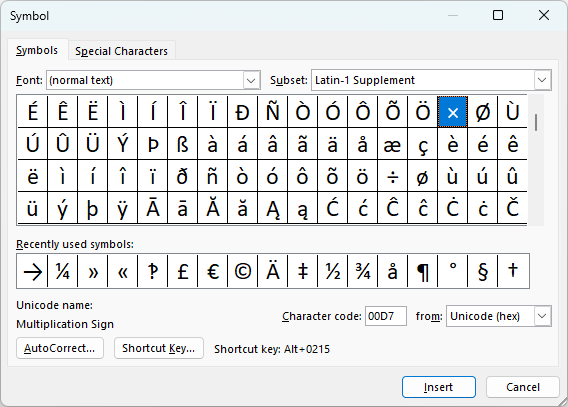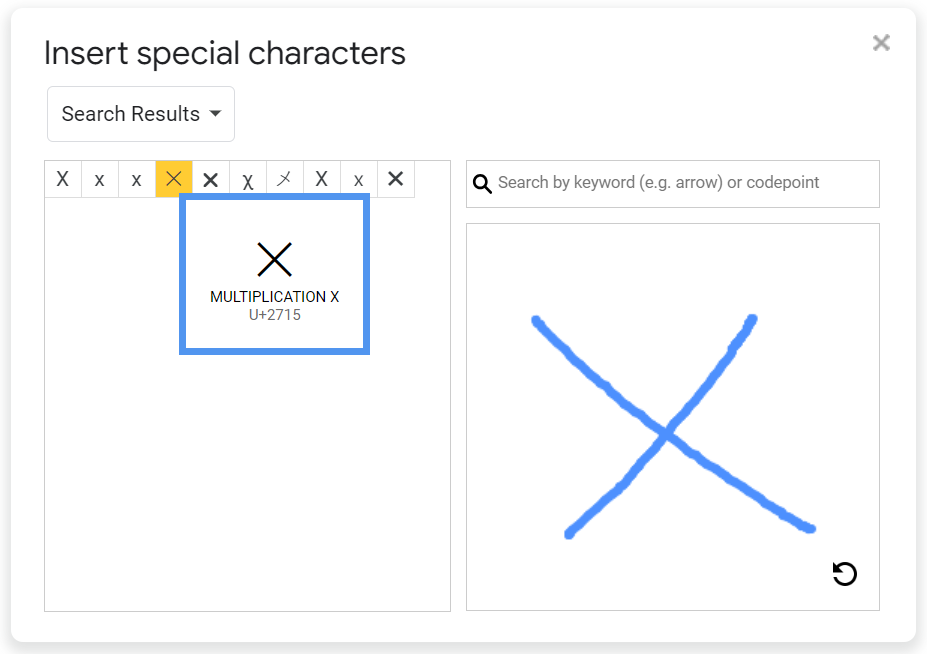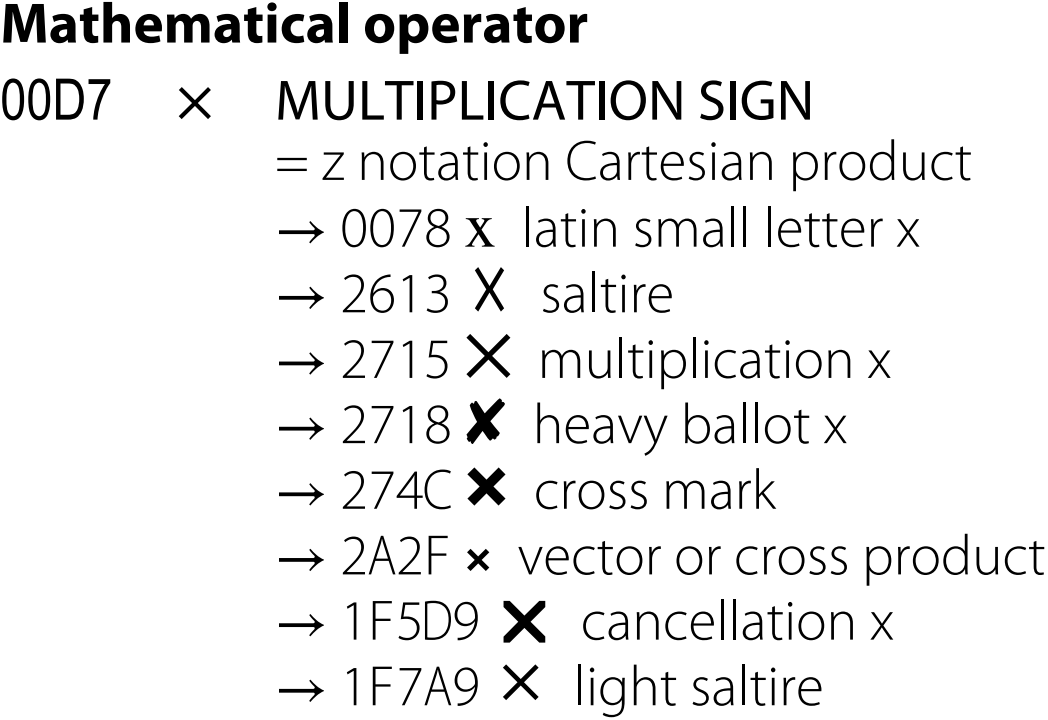Q. How can you find out if you have the right Unicode character? Some characters are hard to tell apart.
A. Great question! Let’s take another trip into the unknown, this time using the potentially ambiguous symbol × (not to be confused with the letter x).
If the character is in a Word document, it’s easy to find out what it is. First, select the character. Next, open the Symbol dialog box from the Insert tab. This dialog box should give you the info you need (shown here using a PC; on a Mac, the interface and what it shows will be a little different):

The Unicode name is “Multiplication Sign”; the character code is 00D7.
If you don’t have Word, try copying and pasting the character into a search engine. If the character isn’t on your screen, try searching by name. A search for either “×” or “multiplication sign Unicode” (or “times symbol Unicode” or the like) should return useful results. Wikipedia—a good source for this kind of purely technical info—will often appear near the top of the list.
But don’t rely on the first answer you come across. Let’s say that, according to Wikipedia, the Unicode number for the multiplication sign is 00D7. If you search the Unicode code charts for 00D7, you should get a link to the latest version of the chart with that character, which you can use to confirm that it’s the one you want (as we’ll see below).
Or, if you use Google Docs, you could draw the symbol in the dialog box that appears when you go to Insert > Special characters (in the menu). But it’s not a foolproof solution. Draw a multiplication sign and you could be faced with ten or more possibilities; that sign isn’t the only character resembling an X. You’ll need to hover over each result to get more info. The fourth one—multiplication X, U+2715—looks promising:

Or is it? Not quite: U+2715 is a similar glyph, but it’s not equivalent to the multiplication sign, as the arrow next to 2715 in Unicode’s chart for 00D7 will tell us (in this snippet from the fifth page):

You’d be right to infer that U+00D7, classified as a mathematical operator, must be the one to use for math, but U+00D7 isn’t one of the ten X-shaped characters that came up for us in Google Docs, whereas U+2715 is one of the ten (and includes “multiplication” in its name).
But if you do a search for “2715” at the Unicode page linked to above, you’ll discover that this “multiplication x” is in an entirely different chart—where it’s one of nearly two hundred “dingbats,” a collection of special characters that are more ornamental than mathematical.
Assuming you want the character designed for mathematical contexts, the right choice is U+00D7 and not its somewhat larger dingbat cousin—or any of the other imposters (several of which are also dingbats). Most characters will be easier to pin down than that one (and less likely to be dingbats), but it’s always a good idea to check more than one source.